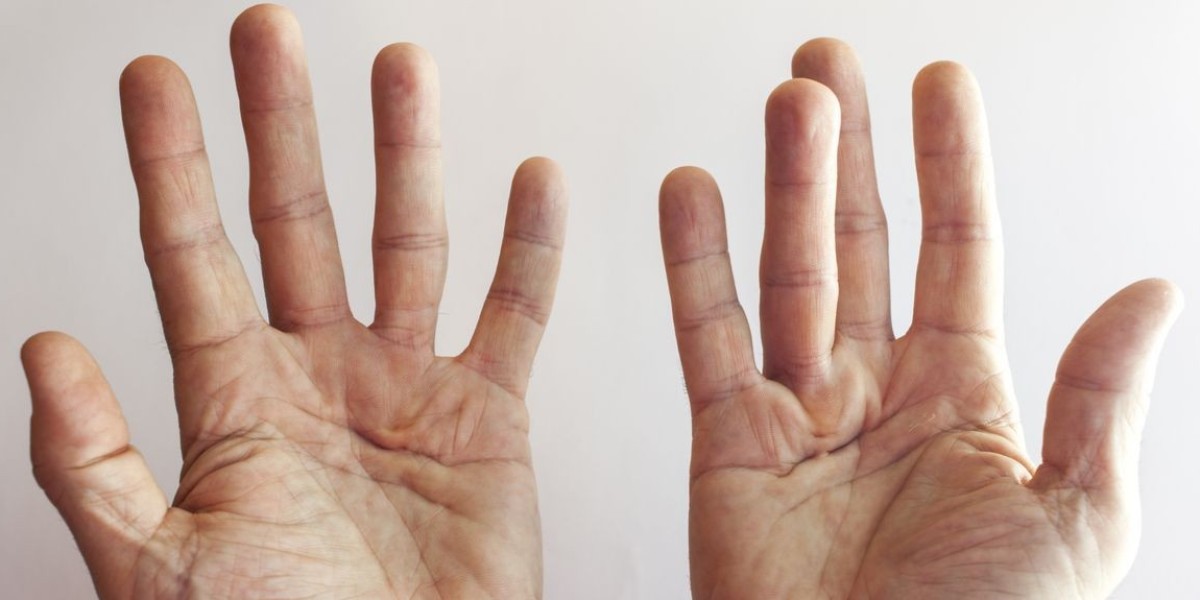Dupuytren's disease, also known as Dupuytren's contracture, is a deforming fibroproliferative disorder of the hand that results in flexion contractures of the fingers. It causes a thickening of the fascial tissue beneath the skin in the palm of the hand which can slowly pull one or more fingers into a bent position. This fibrotic process occurring deep in the palm can interfere with function and causes problems performing everyday tasks.
Epidemiology
Dupuytren's disease has a global prevalence but predominately affects those of Northern European descent. Studies have shown the highest rates occur in Scandinavian countries with prevalence as high as 30-60% in men over 60 years old in Norway. Lower but significant rates of 5-30% are seen in other Northern European populations as well as among those of British ancestry. Prevalence is much lower in Southern European, Asian, African and Native American populations. Males are affected about 3-4 times more often than females. Risk also increases significantly with age, with onset typically occurring between 50-70 years of age. Despite the association with European ancestry, global migration trends have seen an overall increase in cases being reported outside of endemic European regions in recent decades.
Genetic and Environmental Factors
The exact cause of Dupuytren's Disease remains unknown but both genetic and environmental factors are thought to play a role. A positive family history is seen in around 30-75% of cases indicating a strong hereditary component, although the mode of inheritance is complex. Various gene loci have been associated with susceptibility but the disorder is considered to be polygenic in nature. Environmental triggers such as manual labor, hand trauma, alcohol consumption, smoking, diabetes and epilepsy have all been linked to increased risk. The higher prevalence seen in colder Northern latitudes has led to the hypothesis that repetitive microtrauma from vibration or temperature changes may also contribute.
Disease Pathology and Progression
Microscopically, Dupuytren's disease involves an abnormal proliferation of fibroblasts and myofibroblasts in the palmar fascia of the hand. These cells synthesize an excess of collagen which causes the fascia to contract and distort the overlying skin. Early in the disease process, nodules form in the palm composed of proliferating cells within a disorganized collagen matrix. Over time, the contracted fibrous tissue extends from the palm as cord-like structures. As the disease progresses, the fingers are progressively pulled into flexion at the metacarpophalangeal and proximal interphalangeal joints, compromising hand function. The natural history shows variable progression, but recurrence after surgical correction is common.
Clinical Presentation and Impairment
Clinically Dupuytren's disease presents as one or more palpable nodules or cords within the palm causing skin pitting. Typically, the ring and little fingers are most commonly involved due to their proximity to the major sites of fibroproliferation in the palm. The defining physical sign is a flexion contracture of one or more fingers which can range from mild to severe. Contractures impair hand function by limiting activities requiring full extension of the fingers such as turning a key or picking up small objects. Other physical examination findings include "garage door sign" as the finger tries to extend or the "table top test" where the finger cannot be flattened. Beyond function, self-image issues can arise due to deformity. Assessment evaluates contracture severity, disease extent, pain levels and quality of life impacts.
Get more insights on this topic: Dupuytrens Disease
Explore More Articles: Global Vascular Imaging Market








